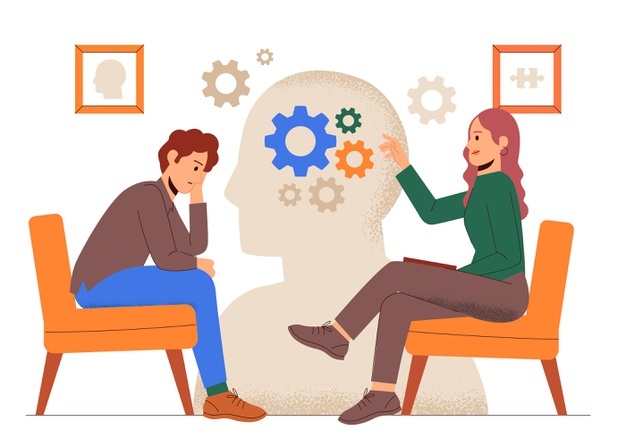
What secret sides of human nature do therapists see that non-therapists would be surprised about?

Human nature is a space that reflects dynamism. It consists of an amalgamation of several
aspects but specifically a combination of thoughts, emotions, and behavior that present itself in
each and every moment of life. This interplay between thoughts, emotions, and behavior creates
phenomena that we either experience or observe others experience.
Although most of us are capable of seeing these phenomena play out, there is a difference in
what and how much a trained eye can pick up as compared to a non - trained eye.
As Psychotherapists, there are some interesting observations that one may come across in the
process of therapy. A therapist is trained not to judge a person but can have certain scientific
judgements about the person’s behavior, thoughts, and emotions. So a therapist may not judge
you but can analyze your thoughts, emotions, and behavior.
As one may wear layers of clothes to protect oneself from the elements, similarly a person may
unknowingly have layers of defenses that make the person feel protected from distress. A
therapist is probably if not always able to identify these layers. The therapist can then help the
person get familiar with these layers and facilitate the process of shedding them one by one.
A common occurrence during therapy is that the client will share the problem that they are
experiencing, for example: “I am feeling low”. As the exploration furthers, it may reach a point
where the person is finding it difficult to explain and may use statements like “I don’t know” or
may change the problem itself. This may seem like a dead-end but a therapist would know
otherwise. This point is a critical point in the exploration as the therapist is aware that the person
is trying to dodge something, something that may be contributing to the distress. Here the
therapist with their skills and training can navigate the exploration in a direction that reveals the
distress point to both the client and the therapist. Once identified, the distress can be dealt with.
A perspective that people tend to be caught up with knowingly and unknowingly is the
dichotomous perspective of correct and incorrect. Most people are trying to view thoughts and
opinions as either correct or incorrect. Although this perspective may provide some context to
the thoughts, there is a possibility that one may use this dichotomy in all aspects of life which
may have a detrimental impact in which a blaming and shaming process may occur.
A therapist is able to recognize and look beyond this dichotomy and understand the contributing
factors to a thought and a behavior, thus viewing the entire phenomenon from an empathetic
perspective rather than a blaming and shaming perspective.
You may know your problem and you may think of external factors contributing to the problem
but your therapist although not completely familiar with your problem definitely knows that the
contributing factors most likely are internal rather than external. The therapist can help you in
understanding and identifying the internal factors and in a way help you take control of the
process of dealing with your problem.
Most of the time the problem is not the one that the person is mentioning but something that is
making the problem seem like a problem. So although one may be able to see things at face
value there is a lot going on in the backstage that only a therapist would be able to pick up on. It
is like a play on stage. The audience can see the actors performing on stage with their dialogues
and acting but not everyone can see the process of narration unfold and the contributing factors
to that process. Only someone who has the knowledge, expertise, and experience of creating and
managing live stage events and plays will understand the intricacies of the show that is put up.
When one is sharing their distress, they may view the distress as a problem. A therapist may
view the same distress in a different light. The distress clearly reflects a person’s value system,
something that the person wants to change or a particular light that the person wants to be seen
in. For example: A person who gets very anxious about having to manage tasks or
responsibilities may seem like having a problem of anxiety but it may also reflect the person’s
value system of wanting to put forth their best foot forward and be their helpful best towards
others.
Last but not the least, most people come to therapy to seek solutions to their problems and the
therapist sees the person expecting the solution to be ready with the therapist. Surprisingly, the
therapist can see through the mere action of the person coming to therapy that the solution
already lies with the person and not so much with the therapist. The act of seeking help is
actually the act of choosing to help oneself.
Human nature with all its possible complexities needs but only a simple trained eye to observe
the beauty that it is and can be.
If you feel you are in the need of therapists, seek help immediately or visit the nearest mental health clinic for a mental health therapy session or have a 1 on 1 chat with the therapists.
Also read-
https://mpowerminds.com/blog/What-to-expect-from-psychotherapy-and-How-it-works
https://mpowerminds.com/blog/What-happens-in-individual-therapy-and-where-can-I-find-an-individual-therapist-in-Bangalore
https://mpowerminds.com/blog/Find-out-if-you-are-at-risk-of-a-mental-health-breakdown-Find-best-therapy-services-in-Kolkata

How Psychotherapy Helps in Late-Life Depression And Anxiety: A Path to Healing, Hope, And Healthy Aging
How Social Isolation Impacts Geriatric Mental Health? How to Reverse It?

